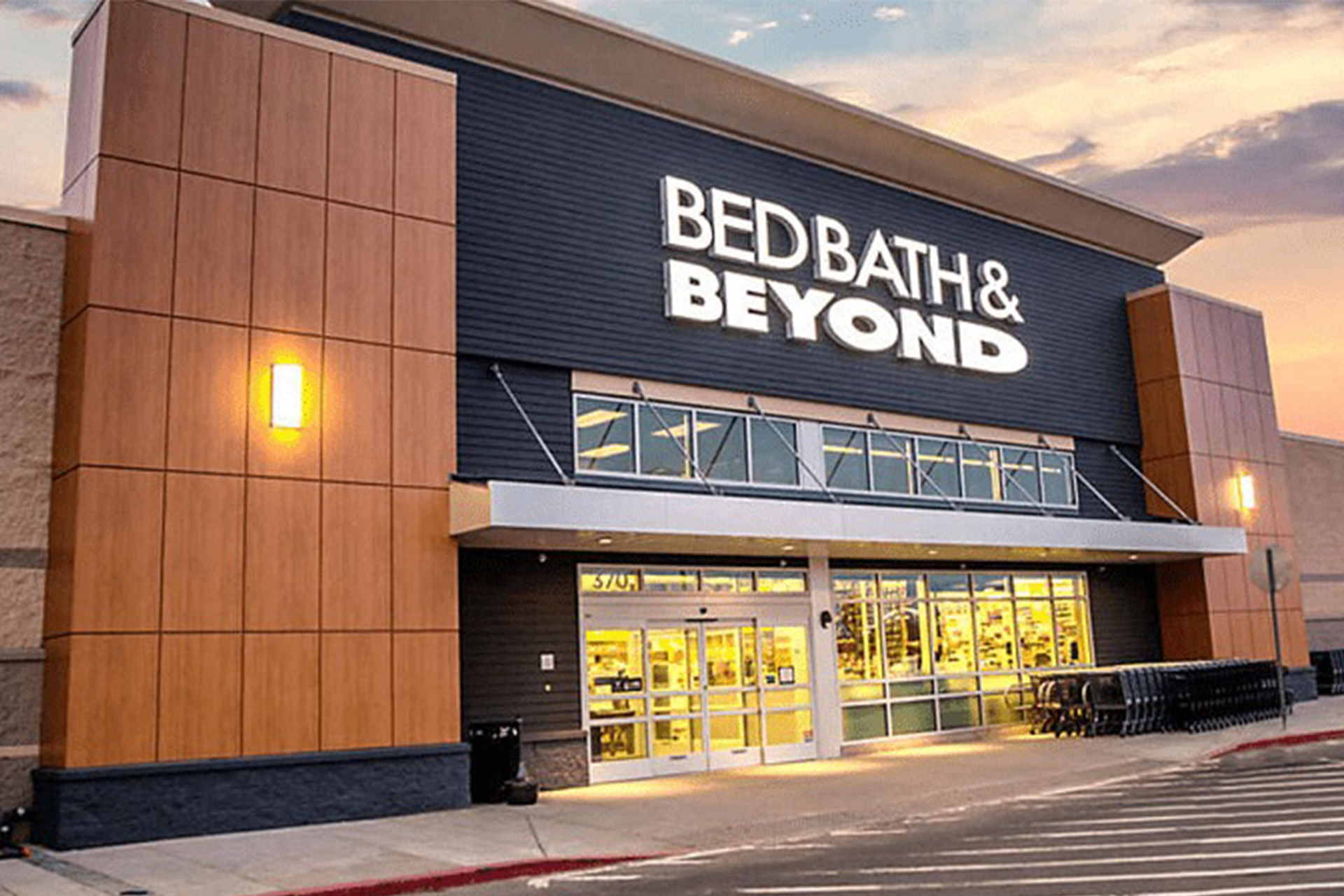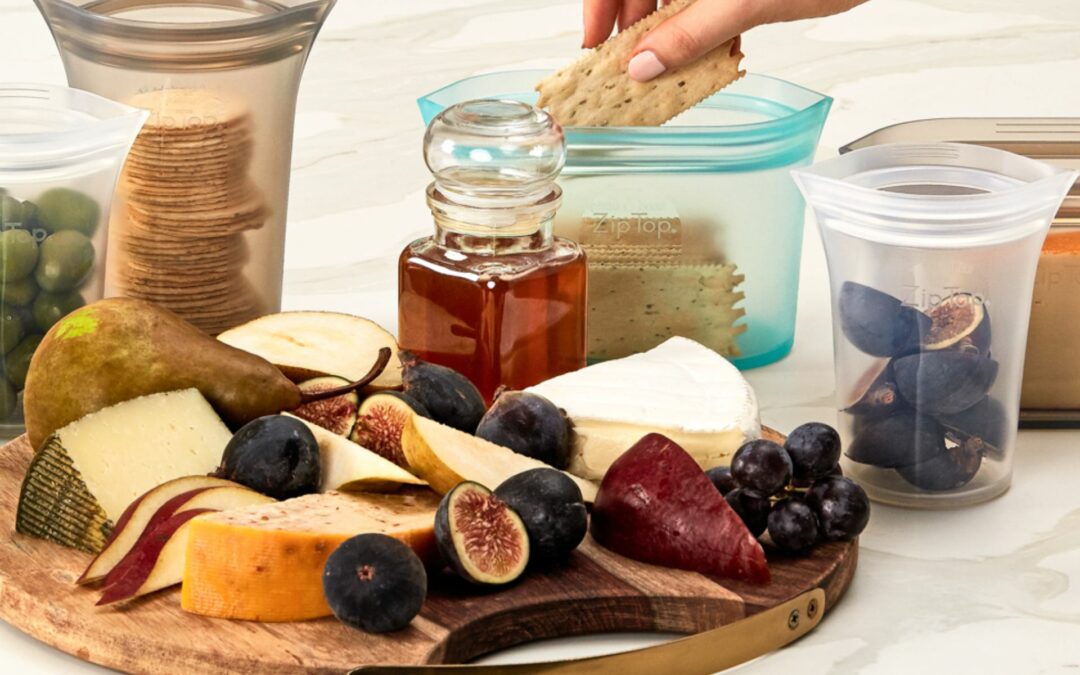In a tough third quarter roiled by transitional initiatives, supply chain issues and macroeconomic effects, Bed Bath & Beyond posted a net loss of $276.4 million, or $2.78 per diluted share, versus a net loss of $75.4 million, or 61 cents per diluted share, in the year-prior period.
Bed Bath & Beyond asserted that the $2.78 net loss per diluted share in the quarter reflected $2.53 of special items for the quarter, and, with those taken into consideration, adjusted net loss was $24.6 million, or 25 cents per diluted share, versus adjusted net income of $10.4 million, or eight cents per diluted share, in the year-previous period. Special items during the third quarter included accounting effects of a non-cash, income tax charge for a valuation allowance recorded in the quarter against certain of the company’s deferred tax assets, charges such as non-cash impairments related to certain store-level assets and tradenames, loss on sale of businesses and charges recorded in connection with the company’s restructuring and transformation initiatives. The restructuring and transformation associated charges included accelerated transitional markdowns related to the planned assortment transition to owned brands as well as costs associated with the company’s transformation initiatives including store closures. Adjusted net loss per diluted share also reflects a current and deferred income tax benefit on the company’s adjusted pre-tax loss, Bed Bath & Beyond stated.
The retailer missed a MarketBeat analyst consensus earnings per diluted share estimate of two cents and fell short of a revenue estimate by $70 million.
Comparable sales slid 7% in the quarter, with in-store down 5% and digital down 9%, versus the year-prior period. Comps slipped 4% versus the 2019 third quarter. Bed Bath & Beyond banner comps declined 10% versus the year-earlier period, but buybuy Baby banner comps gained in the mid-teens percentage, the company reported, with both stores and digital up, although physical locations did a bit better. Comparable sales improved sequentially through the quarter, particularly for the Bed Bath & Beyond banner, the company added.
Net sales were $1.88 billion, down 28%, reflecting a 14% decline related to a planned reduction from the divestiture of non-core stores. Core sales declined 14%. Bed Bath & Beyond has spun off the Cost Plus World Market, Christmas Tree Shops and other operations to focus on the namesake banner and buybuy Baby. The company maintained that store sales decreased primarily due to fleet optimization effects and comp declines. Comparable sales in key destination categories, including bedding, bath, kitchen food prep, indoor decor and home organization, declined 13% in the quarter year over year and 3% versus the 2019 period. Destination categories represented about two-thirds of total Bed Bath & Beyond banner sales in the third quarter, the company pointed out.
Operating loss was $86.1 million versus $122.8 million in the year-before period.
In a conference call, Mark Tritton, Bed Bath & Beyond’s president and CEO, characterized the company as in a different position than it was a year ago, executing on a digital-first omnichannel strategy and delivering a second consecutive quarter of comparable sales and EBITDA improvement through margin management. He said that the company had enhanced omnichannel capabilities to accelerate profitable digital gains and grow the customer base while continuing to strengthen the balance sheet. He said Bed Bath & Beyond’s noncore banner monetization plan has continued and will help fund transformation initiatives. The company has been minimizing share differentials and achieved market share gains in the bed category with improving trends in bath and kitchen. He added that Bed Bath & Beyond is demonstrating market share strength in wedding registry, where it is positioned as a market leader that can benefit in the post-pandemic environment when celebrating life occasions returns to more traditional dimensions.
In announcing the third-quarter financial results, Tritton said “During a quarter where our sales momentum was not where we wanted it to be with sales of $1.9 billion and a 7% comp decline, improved momentum in November and strong gross margins demonstrated progress in our transformation. After our previously announced slower start to sales in September and October, we drove a change in trends by November with our comp decline improving, particularly in stores. However, overall sales were pressured despite customer demand due to the lack of availability with replenishment inventory and supply chain stresses that had an estimated $100 million, or mid-single-digit, impact on the quarter and an even higher impact in December. Nevertheless, our customer acquisition strategy for the Bed Bath banner is gaining traction as evidenced by our Beyond Plus loyalty program, which grew by nearly half a million members after one of our largest new subscriber quarters. Our buybuy Baby banner continues to deliver double-digit growth, and we are on track to achieve approximately $1.3 billion in sales in this first year of transformation, ahead of our investor day goals, all while improving profitability and market share.”
In the quarter, Bed Bath & Beyond responded to a sharp increase in inflation as well as freight and supply chain headwinds, Triton said, noting, “We swiftly implemented market-driven pricing, promo optimization and product mix plans. Our decisive actions led to an adjusted gross margin rate significantly exceeding plan and above 2020 and 2019, a key financial barometer of our three-year transformation strategy. Our owned bands also continued to produce higher merchandise margins at increased penetration rates. We now intend to expand the owned brands strategy to Baby in 2022 as we look at margin enhancing strategies, given sales results in this business have stabilized as a result of our targeted efforts to improve this banner. We are identifying exciting new opportunities to drive sales and Baby is an important cornerstone of our plans, including our recently announced collaboration with Kroger and our own digital marketplace.
“Just as we delivered on gross margin during the quarter, our holistic focus is on improving our top and bottom-line results as we continue to transform. While we continue to target sales improvement, we are also focused on SG&A. We are pursuing additional expense optimization measures of approximately $100 million annualized that will explore areas such as store fleet optimization, fixed costs and discretionary savings opportunities. Earlier this quarter we also announced that we expect to complete our $1 billion three-year share repurchase plan by the end of fiscal 2021, two years ahead of schedule, which underscores our ongoing confidence in our turnaround and commitment to our capital allocation framework. Having concluded just the third quarter of our multi-year plan, we will continue to execute our strategic transformation by diagnosing and reforming our legacy business to achieve our goals. As we prepare for 2022, we look forward to operating in a normalized environment with a base of business upon which to grow.”





